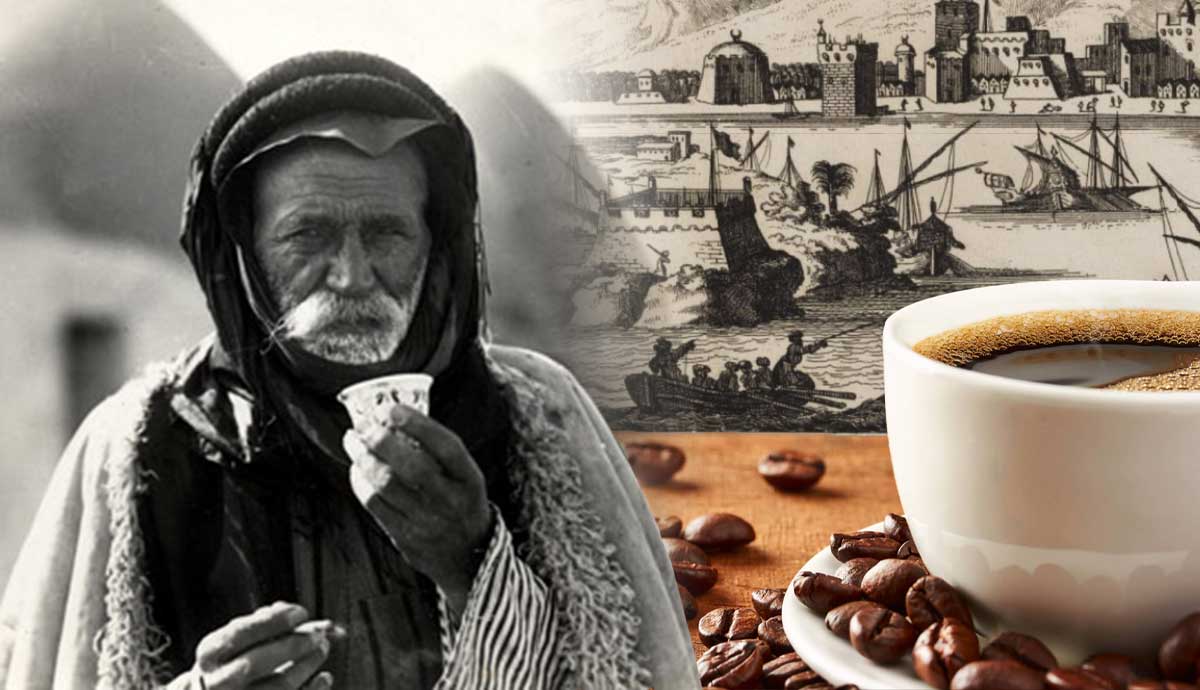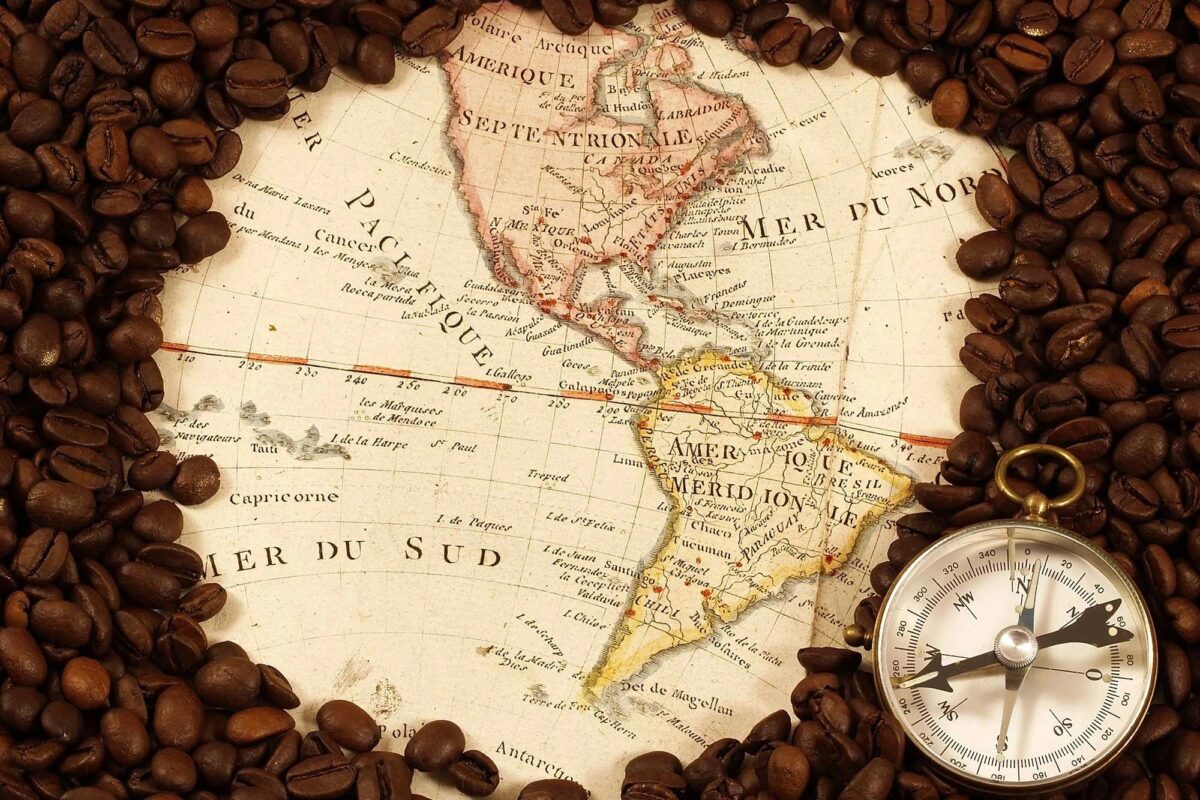Coffee is more than just a morning ritual; it carries a rich tapestry of stories woven throughout centuries. The history of coffee dates back to ancient times, with legends like that of Kaldi, the goat herder who discovered the energizing effects of coffee beans. As it spread from the Arab world to Europe and beyond, coffee transformed into a global commodity that shaped social cultures, economies, and even movements during pivotal historical moments. Understanding this fascinating journey provides insight into why coffee remains an integral part of our daily lives today.
Origin of Coffee: The Legend of Kaldi
The history of coffee begins with an enchanting legend about a goat herder named Kaldi from Ethiopia. According to the tale, Kaldi discovered coffee in the 9th century when he noticed his goats becoming unusually lively after consuming the berries from a specific tree. Intrigued by this energy boost, Kaldi decided to sample the berries himself. He felt invigorated and couldn’t resist the joy it brought him.
Kaldi shared his findings with a local monastery, where the monks began to brew a drink from the berries. The beverage not only kept them awake during long hours of prayer but also enhanced their focus. As word spread, more people sought to experience the stimulating effects of this newfound drink, marking the beginning of the history of coffee.
Key Elements of the Legend of Kaldi:
- Character: Kaldi – The goat herder who discovered coffee.
- Setting: Ethiopia – The origin of coffee and its first introduction to humans.
- Impact:
- Energizing effect on goats and humans.
- Catalyst for brewing coffee to aid monks in their rituals.
In summary, the legend of Kaldi serves as a mythical foundation for the history of coffee, illustrating how a simple discovery led to a beverage that transformed cultures and habits around the world.
The Spread of Coffee in the Arab World
The history of coffee takes a fascinating turn as it spreads throughout the Arab world during the 15th century. Initially cultivated in Ethiopia, coffee gained popularity in Yemen, where it became an integral part of social and cultural life.
Key points about the spread of coffee in the Arab world include:
- Origin in Yemen: Coffee cultivation began in Yemen, where Sufi monks used it to enhance concentration during long nights of prayer.
- Coffeehouses (qahveh khaneh): By the 16th century, coffeehouses emerged as bustling social hubs, fostering community interaction and discussions on philosophy, religion, and politics.
- Cultural Significance: Coffee played a crucial role in Arab hospitality. Serving coffee signified friendship and respect, solidifying its status as a cultural staple.
| Aspect | Yemeni Coffeehouses | Coffee Drinking Norms |
|---|---|---|
| Atmosphere | Social and inviting | Communal gatherings |
| Main Activities | Discussions, music, games | Storytelling and teaching |
| Gender Dynamics | Male-dominated spaces | Women’s gatherings in homes |
Also, the history of coffee highlights the beverage’s role in trade. As demand grew, coffee beans traveled to Persia, Turkey, and beyond, leading to its global appeal. Overall, the cultural exchange and story-sharing that happened in these coffeehouses shaped both the fabric of Arab society and the future of coffee itself.
Coffee Houses: The Birth of Social Culture
Coffee houses played a pivotal role in shaping social culture, especially during the 17th and 18th centuries. These establishments became vibrant centers for conversation, creativity, and commerce. The history of coffee highlights how coffee houses served as forums for political discourse, literary exchange, and artistic expression.
Key features of coffee houses included:
- Social Interaction: They fostered community among diverse groups, where individuals from various backgrounds could share ideas openly.
- Intellectual Hub: In cities like Paris and London, coffee houses attracted thinkers and writers, giving rise to salons that influenced the Enlightenment.
- Business Meetings: Merchants often convened in these spaces to discuss trade, making coffee houses the precursors to modern-day coworking spaces.
Comparison: Coffee Houses vs. Traditional Pubs
| Feature | Coffee Houses | Traditional Pubs |
|---|---|---|
| Primary Beverage | Coffee | Alcoholic drinks |
| Focus | Intellectual discussion | Casual socializing |
| Cultural Impact | Birthplace of ideas | Community gathering spots |
| Clientele | Thinkers, artists, merchants | Local residents, workers |
In essence, the history of coffee illuminates the transformative power of coffee houses. By nurturing conversation and collaboration, they laid the groundwork for modern social and cultural gatherings, ultimately shaping the societies they served.
Coffee and Trade: The Globalization of Coffee
The history of coffee is deeply intertwined with global trade, shaping economies and cultures around the world. Coffee’s rise from a local beverage to a global commodity started in the 15th century. Let’s explore this fascinating journey:
- 16th Century: Coffee made its way from the Arabian Peninsula to Europe, first via trade routes established by merchants.
- Coffee Plantations: The demand for coffee led to the establishment of plantations in various tropical regions, particularly in the Caribbean, South America, and Southeast Asia.
Comparison of Coffee’s Global Impact
| Region | Trade Impact | Cultural Significance |
|---|---|---|
| Arab World | Introduced coffee houses as social spaces | Fostered discussions and intellectual exchange |
| Europe | Coffee became a staple, leading to café culture | Sparked revolution and enlightenment thinking |
| Americas | Coffee plantations boosted economies | Coffee rituals became integral to social life |
The history of coffee highlights how the beverage catalyzed trade networks, influenced economic policies, and even affected colonialism. In the contemporary world, coffee trade continues to represent a significant aspect of global commerce, with millions of livelihoods depending on it. As we look forward, understanding the history of coffee allows us to appreciate its role not just as a drink, but as a global connector across cultures and economies.
The Role of Coffee in the Age of Enlightenment
During the Age of Enlightenment, the history of coffee transitioned from a mere beverage to a catalyst for intellectual exchange and social interaction. As the 17th and 18th centuries unfolded, coffee became synonymous with the gathering of thinkers, writers, and political reformers.
Key Aspects of Coffee’s Role:
- Meeting Places: Coffeehouses sprang up across Europe, serving as venues for discussions that shaped modern philosophy, science, and political theory.
- Intellectual Exchange: These establishments welcomed visionaries like Voltaire and Rousseau, who exchanged ideas that contributed to revolutionary movements.
Comparison of Coffeehouses:
| Feature | European Coffeehouses | Modern Coffee Shops |
|---|---|---|
| Atmosphere | Intellectual and vibrant | Casual and social |
| Clientele | Philosophers, writers | General public, students |
| Purpose | Discussion and debate | Socializing and relaxation |
Through the history of coffee, one can see how these establishments not only spread coffee culture but also facilitated the sharing of progressive ideas. Consequently, coffee houses became the epicenters of social change, stimulating debates that laid the groundwork for democratic revolutions across Europe. Thus, coffee transcended its status as a drink to become a symbol of enlightenment, freedom, and intellectual growth.
Coffee in Europe: From Elixir to Everyday Drink
The history of coffee in Europe showcases its evolution from a luxurious elixir to a staple in daily life. Initially introduced in the 17th century, coffee quickly gained popularity among the aristocracy, who enjoyed it as an exotic beverage. Its appeal was tied to its stimulating properties, which made it a favorite among intellectuals and artists.
Key Milestones in Europe’s Coffee Journey:
- First Coffee Houses: The establishment of the first coffee house in Venice in 1645 marked a pivotal point. This venue attracted scholars and thinkers, fostering discussions that shaped European culture.
- Cafés Across Major Cities: By the late 17th century, cities like Paris, London, and Vienna saw a surge in coffee houses. These places became cultural hubs, encouraging the sharing of ideas and the birth of revolution.
- Widespread Consumption: As coffee spread, it transitioned from an elite drink to an everyday staple. By the 18th century, it was widely consumed, making it accessible to a broader audience.
Comparison of Coffee Use in Different Classes:
| Class | Coffee Use | Social Impact |
|---|---|---|
| Aristocracy | Enjoyed in salons and gatherings | Sparked intellectual movements |
| Middle Class | Regular home consumption | Enhanced social gatherings |
| Lower Class | Limited access, later became popular | Shifted culinary habits |
In summary, the history of coffee in Europe reflects its transformation into an integral part of daily life, influencing not only culinary preferences but also social dynamics. Today, coffee remains a cherished beverage, bridging cultures and generations.

The Industrial Revolution and Coffee Production
During the Industrial Revolution, the history of coffee experienced a significant transformation, catalyzing its production and distribution on a global scale. This era, spanning from the late 18th to the 19th century, introduced mechanization, which drastically changed how coffee was cultivated and processed.
Key Developments in Coffee Production:
- Mechanical Innovations: The introduction of machinery facilitated the processing of coffee beans. Equipment like hulled and roasted machines made it faster and more efficient.
- Steam Power: The use of steam engines in coffee plantations improved transportation logistics, allowing for quicker movement of beans from farms to markets.
- Mass Production: Coffee emerged as a commodity, transitioning from small local production to a more industrialized system. Consequently, larger plantations began using available technology to increase yield.
Comparison of Coffee Production Pre and Post-Industrial Revolution
| Aspect | Pre-Industrial Revolution | Post-Industrial Revolution |
|---|---|---|
| Production Method | Manual labor and small-scale farms | Mechanized, industrial farming |
| Transport | Limited to local markets | Global trade networks expanded |
| Coffee Quality | High-quality, hand-selected beans | Mass-produced, variable quality |
Overall, the history of coffee during the Industrial Revolution marks a pivotal shift. As techniques advanced, coffee became more accessible, fueling the beverage’s popularity and establishing it as an integral part of modern life.
The Rise of Instant Coffee
The history of coffee takes an intriguing turn with the invention of instant coffee, which revolutionized how people consume this beloved beverage. Emerging in the early 20th century, instant coffee provided a quick and convenient way to enjoy coffee without the hassle of brewing.
Key milestones in the rise of instant coffee:
- 1890s: The first known attempt at creating instant coffee occurred when a Frenchman named George Washington developed a coffee powder. Although it garnered attention, it lacked the taste that consumers desired.
- 1938: Nestlé introduced Nescafé, enhancing the production process that allowed for better flavor retention. The product gained immense popularity during World War II, as American soldiers received instant coffee rations.
- 1950s-1960s: Instant coffee started to dominate the market, appealing to busy consumers. Major brands like Maxwell House and Taster’s Choice led the way, producing various blends that catered to different tastes.
Benefits of instant coffee:
- Convenience: Instantly dissolves in water, perfect for those on-the-go.
- Shelf Life: Longer-lasting than brewed coffee, it requires no refrigeration.
- Cost-Effective: Lower production costs make it affordable for mass consumption.
Today, the history of coffee continues to evolve, with instant coffee seeing a resurgence due to innovations in flavor and quality. As consumers seek convenience without sacrificing taste, this phenomenon solidifies instant coffee’s place in the modern coffee narrative.
Specialty Coffee: The Modern Era
The history of coffee has evolved dramatically, especially in recent years. Today, specialty coffee stands as a testament to this evolution, showcasing enhanced quality, diverse flavors, and a deep-rooted appreciation for the craft.
Key characteristics of specialty coffee include:
- Quality Beans: Sourced from specific regions known for their unique climates.
- Artisan Roasting: Small-batch roasting techniques unlock distinct flavors.
- Brew Methods: Innovative brewing methods, like pour-over and cold brew, highlight the beans’ nuances.
- Sustainability: A commitment to ethical sourcing bolsters both farmer livelihoods and environmental health.
Comparison of Coffee Types
| Coffee Type | Flavor Profile | Production Method |
|---|---|---|
| Specialty Coffee | Complex, origin-specific | Artisan methods, attention to detail |
| Commercial Coffee | Blended, standardized | Mass-produced, lower quality |
| Instant Coffee | Convenient, uniform flavor | Freeze-dried or spray-dried |
In today’s coffee culture, the history of coffee intertwines with a growing focus on sustainability and local sourcing. Specialty coffee isn’t merely a beverage; it’s an experience that emphasizes unique flavor journeys. Consumers are increasingly seeking knowledge about the origins of their brews, fostering a deeper connection to the history of coffee and the communities that cultivate it.
This modern era celebrates coffee as an art form, transforming everyday rituals into crafted experiences—inviting everyone to explore the rich tapestry woven through the history of coffee.
Cultural Significance of Coffee Around the World
The history of coffee intertwines deeply with various cultures, serving as more than just a beverage—it’s a global symbol of connection, tradition, and socialization. Throughout the world, coffee finds its unique place in cultural practices:
- Middle East: In Arabic culture, coffee, known as “qahwa,” signifies hospitality. Serving coffee during gatherings is a ritual that showcases generosity.
- Europe: Coffeehouses became centers for intellectual discourse in the 17th century. They provided venues for revolutionary ideas, making them known as “penny universities.”
- Ethiopia: Coffee rituals are integral, often accompanied by ceremonies that celebrate community and friendship. Ethiopians consider these gatherings sacred.
- Latin America: In countries like Brazil and Colombia, coffee farming shapes local economies and identities. Festivals celebrate the “bean,” with music, dance, and traditions emerging from this important crop.
- Asia: In Japan, coffee combines with tea culture, resulting in unique variations like “siphon coffee,” highlighting artisanal methods.
In summary, the history of coffee reflects not just its journey but also how it acts as a bridge across diverse cultures. Each region adds its flavor, tradition, and significance, making coffee an essential part of social life worldwide.
The Future of Coffee: Sustainability and Innovation
As we look ahead, the history of coffee continues to evolve, particularly in the realms of sustainability and innovation. With climate change posing significant challenges to coffee production, it’s crucial for the industry to adapt and implement sustainable practices. Here are some key trends shaping the future of coffee:
- Sustainable Farming: Coffee farmers are increasingly using eco-friendly techniques, such as agroforestry, which enhances biodiversity and helps to combat soil erosion.
- Direct Trade: This model bypasses traditional middlemen, ensuring farmers receive a fair price. Consumers are increasingly aware of where their coffee comes from, leading to a growing demand for quality and ethically sourced products.
- Innovative Brewing: Recent advancements in brewing technology, such as precision coffee makers and smart scales, allow for better flavor extraction and control over coffee quality.
- Waste Reduction: Coffee shops and producers are focusing on reducing waste by repurposing coffee grounds for various uses, such as compost or skincare products.
- Plant-Based Alternatives: With the rise of specialty coffee, consumers are also turning to plant-based milk options, promoting a more sustainable approach to coffee consumption.
Ultimately, the future of coffee hinges on these advances, ensuring that the history of coffee not only honors its past but also embraces a responsible and innovative path forward. By prioritizing sustainability, the coffee industry can thrive while caring for the planet.
Frequently Asked Questions
What is the origin of coffee?
Coffee’s origins trace back to the ancient coffee forests of Ethiopia, where legend states a goat herder named Kaldi discovered the coffee bean after noticing his goats becoming energetic from eating coffee cherries. It eventually spread to the Arabian Peninsula, leading to the establishment of coffee cultivation and trade in the 15th century in Yemen, where the drink gained popularity in various social and public settings.
How did coffee spread to Europe?
Coffee made its way to Europe in the 16th century through trade routes. Initially met with skepticism, it garnered attention and became popular in places like Venice and London. Coffeehouses emerged in major cities where people gathered to discuss news, politics, and art, often referred to as “penny universities” due to the low cost of entry and wealth of knowledge shared among patrons. This cultural evolution played a significant role in fostering intellectual exchange.
What impact did coffee have on society during the 17th century?
During the 17th century, coffee transformed social customs, particularly in Europe. It became the drink of choice for intellectuals and active thinkers, replacing alcohol at many gatherings. This led to the creation of coffeehouses, where it was celebrated as a means for conversation and debate, directly influencing the Enlightenment. These establishments were instrumental in spreading ideas and were often hotspots for political discussions, further stimulating societal change and progress.
How did coffee plantations develop in the Americas?
In the 18th century, coffee cultivation expanded to the Americas as European colonizers sought lucrative agricultural products. The establishment of plantations in Brazil, Colombia, and the Caribbean islands utilized enslaved labor, which contributed to the large-scale production of coffee. Brazil became a dominant force in global coffee supply, influencing economic growth and shaping the agricultural landscape, though this came at significant human and ethical costs related to slavery.
What are the different types of coffee that originated from various cultures?
Various cultures have put unique spins on coffee, giving rise to distinct varieties like Turkish coffee, which is finely ground and simmered with sugar; Italian espresso, known for its concentrated flavor and method of preparation; and Vietnamese coffee, often brewed with a traditional drip method and served with sweetened condensed milk. Each type reflects its cultural background and has individual preparation techniques, contributing richly to the diverse global coffee tapestry.





